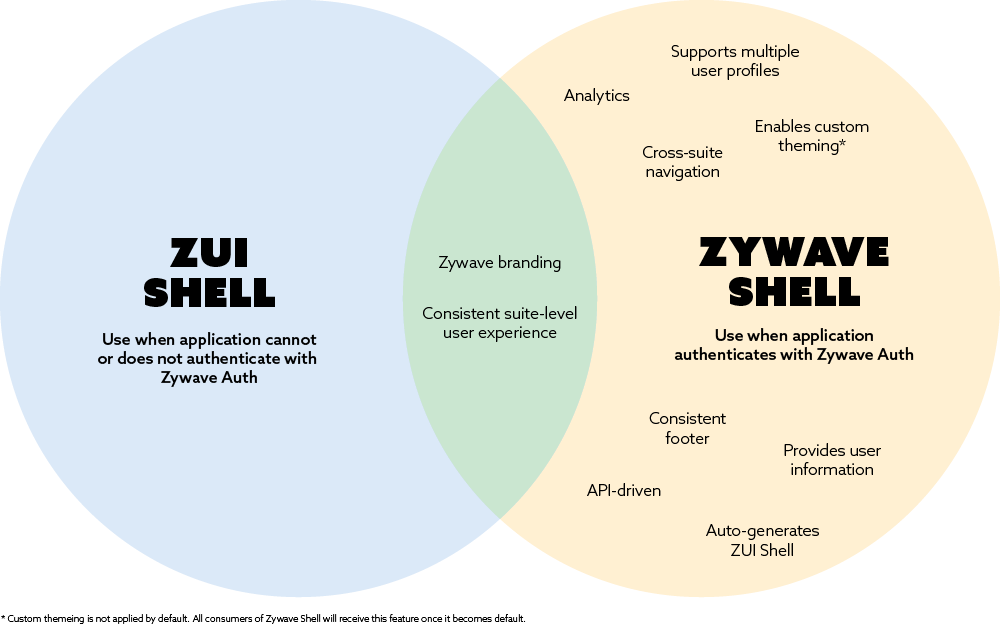We commonly get asked: what are ZUI Shell and Zywave Shell? How are they different? Which one should I use? Hopefully the information here sheds some light and clarifies the purposes of these two components.
ZUI Shell
ZUI Shell is part of the Booster Design System and is Zywave's design standard for how all our applications are laid out to provide a consistent experience to end users when they navigate across the Zywave suite.
There are four major sub-components that make up ZUI Shell:
- Topbar
- Sidenav
- Footer
- Content area
Zywave Shell
Zywave Shell is part of the Booster Application Framework and consists of API-driven components that heavily depend on the Booster Design System, specifically ZUI Shell, to automatically render a consistent layout and experience to end users. Bring your content and Zywave Shell will generate the rest! It is important that your applications must authenicate with Zywave Auth in order to reap all the benefits of Zywave Shell.
If your applications meets the requirements to use Zywave Shell, these are the built-in features they will receive:
- Auto-generated ZUI Shell
- Consistent cross-suite navigation
- Topbar branding
- User information retrieval and display
- Pre-configured analytics
- Consistent footer
Learn more about Zywave Shell.
Differences between ZUI Shell and Zywave Shell
The best way to differentiate between ZUI Shell and Zywave Shell is you cannot use Zywave Shell without authenticating your application through Zywave Auth.
Both may appear the same visually because Zywave Shell actually auto-generates ZUI Shell and configures a lot of features beneath the surface for free.

Why use Zywave Shell?
Zywave Shell takes most of the configuration and decision-making out of your hands by preconfiguring many features compared to ZUI Shell:
| ZUI Shell | Zywave Shell | Similarities |
|---|---|---|
| Zywave's design standards of the layout of a application | API-driven component that renders the shell of an application | Enforces Zywave branding |
| Use when an application cannot or does not use Zywave Auth | Use when an application authenticates with Zywave Auth | Provides a consistent suite-level user experience |
| Auto-generates ZUI Shell | ||
| API-driven | ||
| Supports multiple user profiles | ||
| Cross-suite navigation | ||
| Provides user information | ||
| Enables custom theming (Not applied by default, but all consumers of Zywave Shell will receive this feature once it becomes default.) | ||
| Analytics baked in | ||
| Consistent footer for legal purposes |
Which one is best for my project?
If your goal is to integrate with the Zywave suite, Zywave Shell is highly encouraged if your application is able to support Zywave Auth. In the case that your application does not support Zywave Auth, we recommend ZUI Shell.